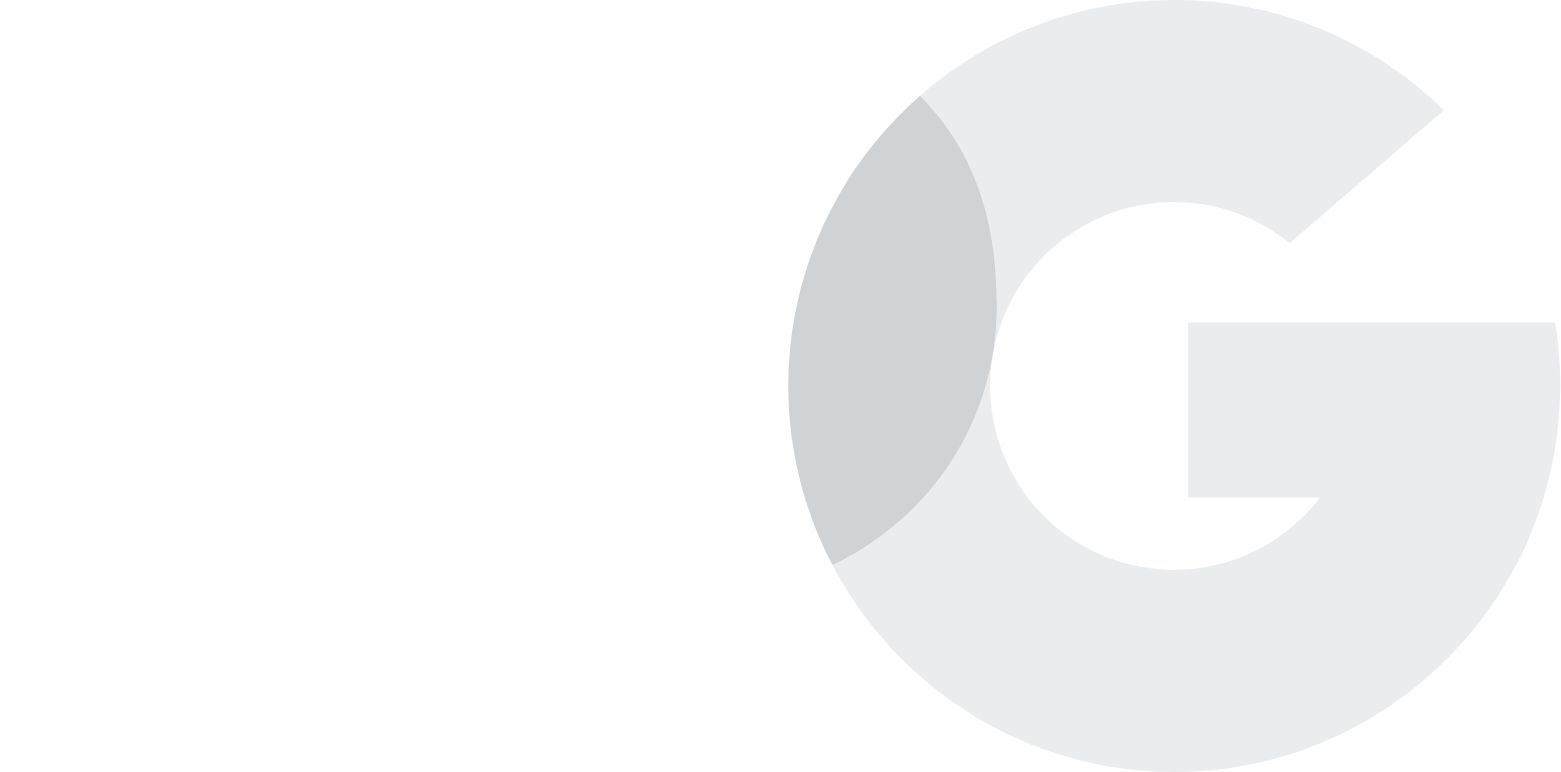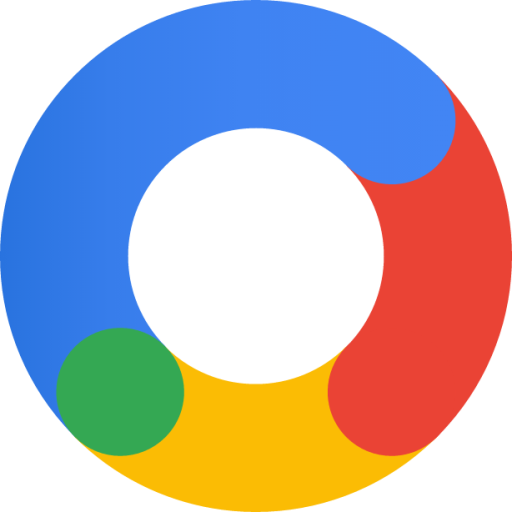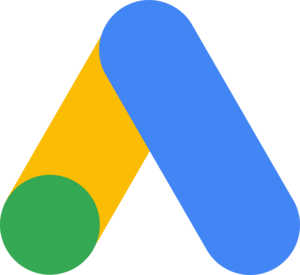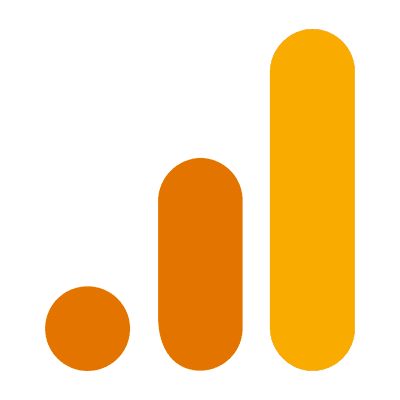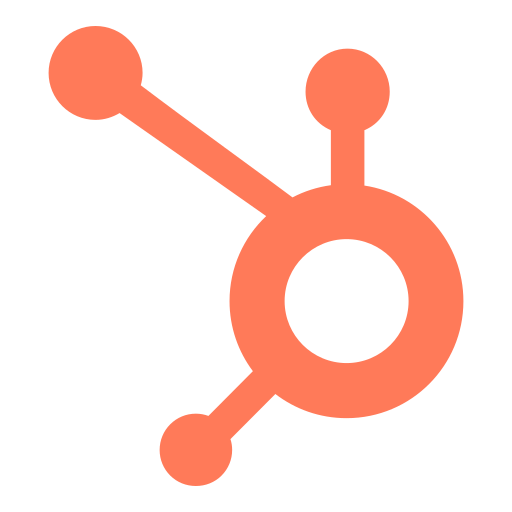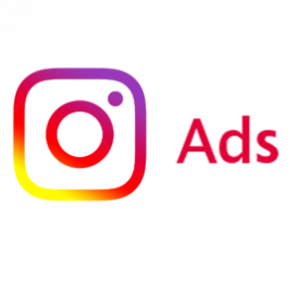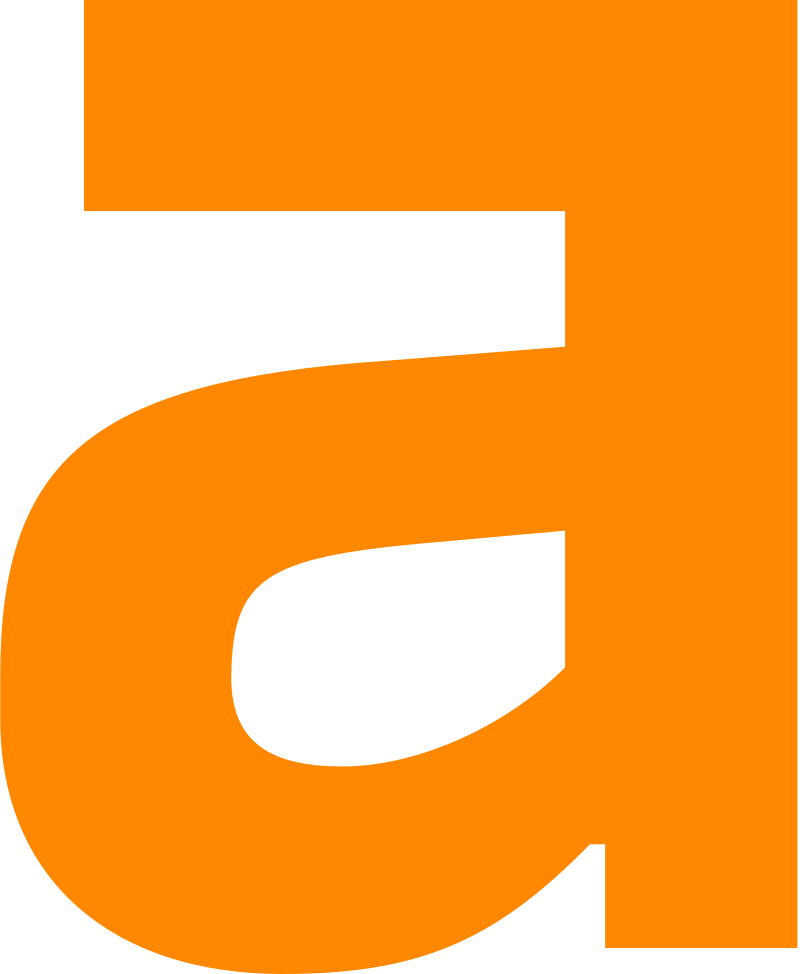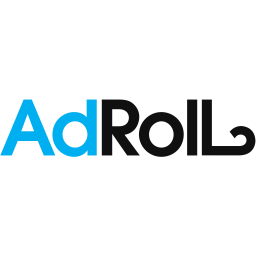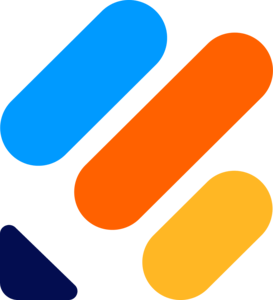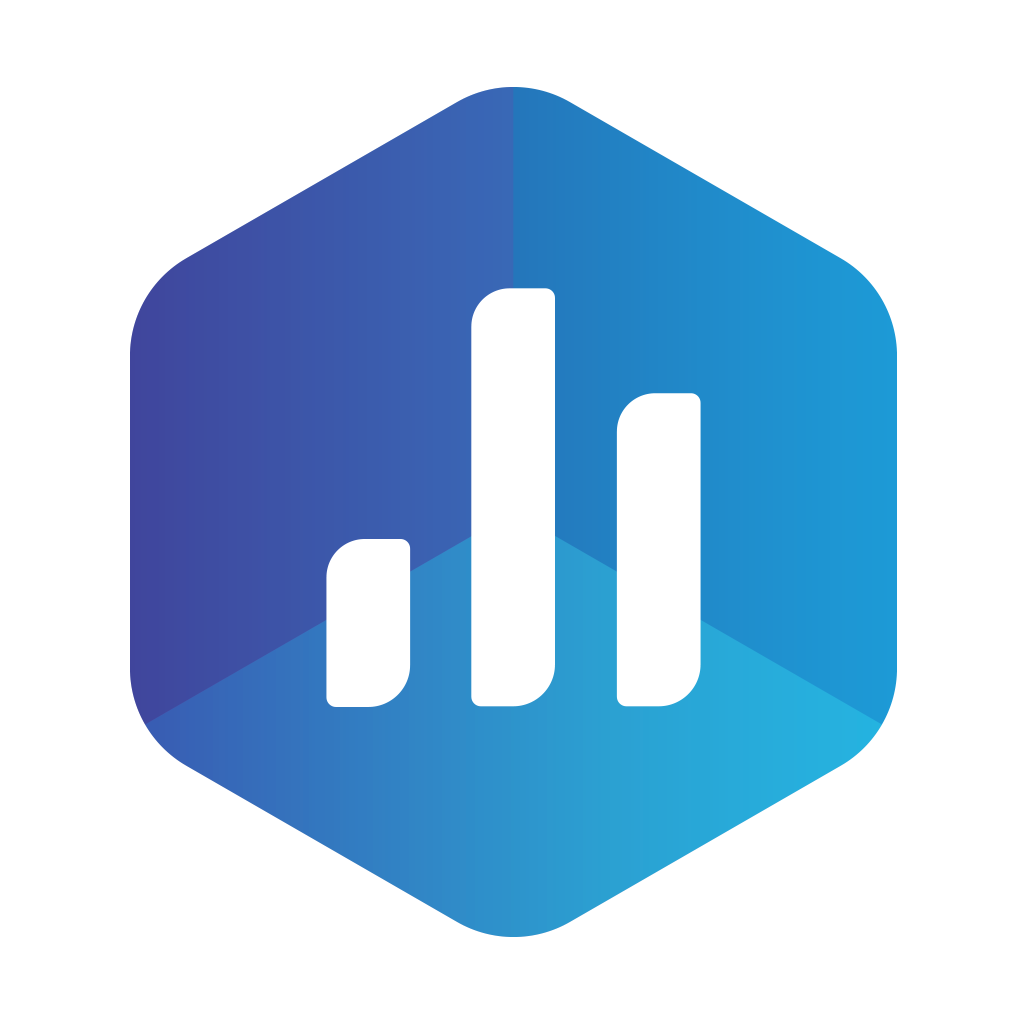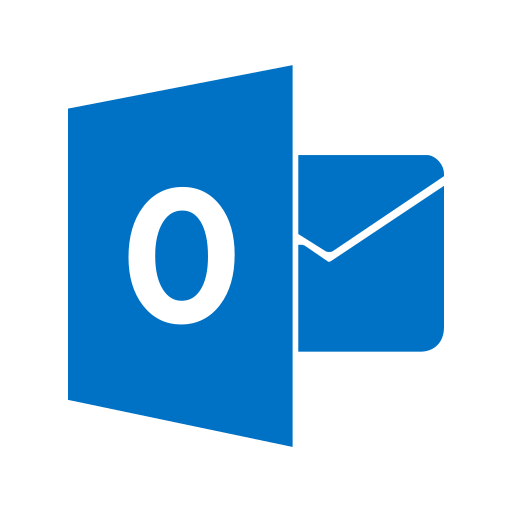Hi, I'm Steve Ferreira
A Digital Strategy Director
Award-winning North American Digital Strategist, passionate about building sustainable business success. With over a decade of experience across the world and many industries. There is a solution to your challenge.


Inquisitive and Passionate about Digital Marketing
Skilled, awarded, and accomplished digital marketing specialist with over a decade of experience and a successful track record of researching, building, and implementing effective digital strategies in multiple industries and markets. Passionate about sustainable business growth and development, with a mission to drive positive results and outcomes. Professionally recognized as innovative and committed to operational excellence and leadership.
For a more comprehensive view of my qualifications and career achievements, please visit my LinkedIn profile .
Industry Leaders
Dedication Crafts Mastery
Strategy & Execution
Performance Marketing
Lead Generation
Audience Segmentation
Business Development
Media Planning
CPC & CPM
Strategy & Management
Brand Development
Market Research
Trend Forecasting
Brand Management
Brand Positioning
Brand Communications.
Operations and Support
Data Reporting & Analytics
Competitive Revenue Analysis
Team Leadership
UX&UI / Design Thinking
SEM
CMS & CRM
Commendations

Samantha
Digital Marketing SpecialistGreatly Uplifting
15 September 2023"Working with Steven was not only uplifting and fun, but his great delivery of various business strategies provided immense insight into his work ethic, dedication and being a team player. As a lead strategist, he mentored and led a team but also fostered great relationships among various departments. His factual and data-driven personality should not be taken for granted."

Mark
Head of CommercialStrategically Focused
15 September 2023"Steven was always an absolute pleasure to deal with, both in terms of his nature and strategic ability. His diverse experience saw him being called into many projects supporting various need states. Strategy is often the precursor to implementation and the solid foundation laid by him ensured success with minimal deviation from the point of initiation. An asset to any strategically focused business."

Alex
Category ManagerExceeds Expectations
16 December 2020"Steven showed incredible energy when working on our account. He went out of his way to find additional research and plan our strategies - While not being a direct consumer of our brand he still managed to find a way to related, understand en see into out visions. Given the right circumstances, I would move my business to follow Steven."

Chris
Managing DirectorGreat Hire
20 May 2020"I had the pleasure of working with Steven and found him to be a valuable asset. He's honest, dependable, and a hard worker who impressed clients with his strategic thinking and digital expertise. Leveraging his experience across agencies, Steven crafted impactful pitches that secured both new and existing business. Highly organized and a strong communicator, he excelled at working independently, following through on tasks, and adapting to any project assigned. Beyond his core skills, Steven readily volunteered for internal initiatives, charity events, and employee wellness programs. I highly recommend Steven – he'd be a tremendous asset to your team."

Bianca
DirectorGreat Mentor
14 September 2023"Steven is my mentor. He is an amazing mentor and has contributed a great deal towards my career and growth. He has grown into a great friend of mine as his presence around the office is magnetic. He always has a joke instore for you which somehow leads to life advice. Steven in essence is a great leader and contains all the qualities a leader needs, to the point, caring, hardcore, understanding and best of all teaches you the tools you need to become a successful candidate yourself."

Amber
Marketing and Operations ManagerLeader & Innovator
1 March 2024"In my experience working with Steven, he consistently impressed me with his unique strategic insights, leadership, and digital marketing knowledge. His attention to fine details helped us identify critical issues early on, saving us time and money. Beyond his technical skills, Steven is a natural mentor. He fostered a positive and collaborative work environment, always willing to share his knowledge and push others to excel. His ability to challenge perspectives led to innovative solutions on numerous occasions. Steven's dedication, expertise, and leadership make him an asset and I have no doubt he will continue to achieve great things"

Jessica
Digital StrategistSkilled Mentor
27 September 2023"Steven was an incredible mentor and work colleague. He is a highly skilled and experienced strategist that pays attention to detail and is dedicated to working to the best of his ability for each and every client he works on. His patience when it comes to helping others is admirable - he is always ready and willing to help anyone within his team to understand a specific topic or help them to grow within their role. He has the consistent willingness to learn, effective communication, and self-motivation. I highly recommend Steven to any company as I know that he is a high quality candidate."

Jerome
Regional Business LeadCurious problem-solver
20 December 2015"What I enjoyed most about Steven was his curiosity. Whilst the clients were complimentary about Steven’s ability & administration I believe his interest lies in understanding & solving marketing or communication challenges given the number of discussions we had around projects & how to approach or solve them."

Jenna
Creative CopywriterExceptional Team Player
7 June 2024"Steve put a lot of effort into what he did. I would assist in editing and copy-checking strategies from time to time, and I'm incredibly pleased I had the opportunity to do so. He is the reason I want to go into Strat one day. Without a shadow of a doubt, he is a team player and a humble, honest human from the moment you meet him. He sees opportunity and potential in those around him and isn't scared to problem-solve when something seems impossible. Steven is the kind of person I dream of working with and having as part of a project. He is great at what he does and I couldn't recommend him more!"
Latest Posts

How AI-Powered Digital Strategy Redefines North American Marketing
The First-Party Data Mandate: Fueling AI Correctly
The time for cautious AI experimentation in digital marketing is over. It is now a mandate for strategic leadership.
In North America, the transition to a privacy-first environment, fueled by the deprecation of third-party cookies and increasing regulation, has destroyed the traditional mass-marketing model. The new competitive edge is not found in bigger ad budgets, but in superior data processing and predictive action. This is the domain of AI-Powered Digital Strategy.
The current market challenge is simple: Data signals are fractured, consumers expect absolute relevance, and margins are tight. The old playbook of broad segmentation and volume-based media buys is obsolete. The path to sustainable growth requires a complete system change—one where artificial intelligence is not a novelty tool, but the intelligent core of your strategic execution.
We have moved beyond the introductory phase of generative models. This is not about drafting basic ad copy or automating simple email sequences. This is about deploying intelligence that processes billions of consumer signals to make real-time decisions, predict customer lifetime value (CLV), and systematically optimize your entire customer journey.
For the modern business leader, mastering a robust AI-Powered Digital Strategy is the non-negotiable step to ensuring measurable revenue and market dominance.
From Tactical Tooling to Strategic Architecture
The most significant strategic failure of the past year has been the industry’s confusion of AI as a task-specific tool rather than a foundational architecture. Too many teams view AI adoption as downloading a new application, rather than implementing a system that re-engineers decision-making.
This is a failure of leadership.
The reality is that 78% of organizations now use AI in at least one function, confirming that the technology has crossed the chasm from experimental to essential. However, the difference between a functional use of AI and a strategic AI-Powered Digital Strategy is defined by intent: you must shift from automation to augmentation.
The Great Shift: Automation Versus Augmentation
Automation uses AI to take over repetitive tasks—scheduling, resizing images, drafting basic emails. It replaces low-skill, high-volume human effort. This offers efficiency, but not strategic advantage.
Augmentation, conversely, uses AI to enhance the cognitive capabilities of your most valuable talent. It processes complex data signals far beyond human capacity and surfaces predictive insights that inform strategic direction. It makes your best strategists and planners more effective.
For high-adoption organizations, this distinction is clear: data shows that lower-AI adoption areas are more likely to delegate complete tasks (automation), while high-adoption areas tend toward greater learning and human-AI iteration (augmentation).
A true AI-Powered Digital Strategy mandates that you:
-
Automate the mundane to free up human capacity.
-
Augment human strategists with predictive models to attain market-beating performance.
The future of your brand is not decided by how quickly your employees write a prompt; it is decided by how intelligently your AI uses data to model consumer behavior.

The First-Party Data Mandate: Fueling AI Correctly
An intelligent engine is worthless without clean, powerful fuel. In the context of an AI-Powered Digital Strategy, that fuel is first-party data.
We must be crystal clear: AI models are only as good as the information they are trained on. This is the central tenet of the Garbage In, Gospel Out problem. If you train a sophisticated predictive model on fragmented, consented-data-poor signals from third-party sources, your model will simply automate bad decisions.
Data Strength: The Non-Negotiable Prerequisite
Building an AI-Powered Digital Strategy demands Data Strength. This goes beyond simply possessing a large customer list; it requires a commitment to three core data principles:
-
Unity and Cohesion: Your data must be unified in a central repository, typically a Customer Data Platform (CDP), to create a single, accurate view of the customer. AI cannot model the customer journey if the underlying data is scattered across five different departmental silos.
-
Consent and Compliance: AI must be trained on fully consented data. In the complex North American regulatory environment, utilizing data obtained with explicit user permission is the only way to safeguard your campaigns and avoid operational risk.
-
Depth and Quality: Predictive models crave depth. This includes transactional history, behavioral signals (what they clicked or viewed on your site), and most valuable of all, zero-party data (declared preferences and intent). The more quality data you feed your models, the more accurate and granular the predictions become.
Businesses that refuse to invest in this data infrastructure are essentially trying to run a supercomputer on a dial-up connection. They will fail to attain the measurable advantage that the current market demands.
Building a High-Performance AI Workflow
A genuine AI-Powered Digital Strategy is a complete workflow that touches every stage of the customer journey, demanding cross-functional alignment between media, creative, and analytics.
Strategic AI Use Cases for North American Growth
Leaders must prioritize AI use cases that directly impact revenue and efficiency:
1. Predictive Audience Modeling
AI excels at moving beyond simple historical segmentation (e.g., “purchased product X”) to complex predictive segmentation (e.g., “customer Y has an 85% probability of churning in the next 30 days” or “prospect Z has a 92% propensity to buy the premium package”). This capability, when fueled by strong first-party data, allows for laser-focused media allocation.
2. Dynamic Media Allocation
AI should process data streams in real time to shift media budgets toward high-converting channels and audiences in the moment. For a large-scale North American campaign, AI can assess performance across various regional, platform, and audience variables and dynamically adjust the spend allocation every hour. This moves media buying from a manual, weekly task to an ongoing, instantaneous optimization loop.
3. Content and Personalization at Scale
AI enables true hyper-personalization. It can analyze a user’s behavior and instantaneously generate customized ad copy, email subject lines, or website elements that precisely match their current stage in the buying cycle and their declared preferences. This ensures that every customer touchpoint is relevant, increasing conversion rates and cutting through the market noise.
Implementing the Co-Pilot Model and Risk Management
To attain maximum performance, the role of the human strategist must evolve:
-
The Human as Prompt Architect: The human strategist retains full ownership of the strategic brief, the ethical boundaries, and the desired business outcome. AI is then directed with precise, intentional prompts—acting as a co-pilot that executes the tactical complexities of that high-level strategy.
-
The Human as Validator: Never deploy AI output blindly. The human strategist remains the essential final validator for brand voice, regulatory compliance, and cultural nuance—areas where current AI models can still falter.
-
Risk Management and Transparency: An authoritative AI-Powered Digital Strategy must include a transparent policy on the ethical utilization of data and AI-driven processes. This builds consumer trust, which, as a valuable asset, is now more important than any line of code.
The New Measurement Mandate: Proving ROI
The investment in an AI-Powered Digital Strategy must be justified by clear ROI. This demands a complete revision of your measurement framework:
-
Focus on CLV and Market Share: Move beyond immediate, tactical metrics (like Cost-Per-Click) to measure the impact of AI on Customer Lifetime Value (CLV) and long-term Market Share. AI’s predictive capabilities provide the clearest pathway to calculating CLV accurately.
-
Embrace Holistic Modeling: Utilize advanced techniques like Marketing Mix Modeling (MMM), which, unlike last-click attribution, provide a complete, privacy-respecting view of how various channels influence the final purchase, correctly attributing value to AI-optimized efforts.
The companies that lead the North American market in the next five years will be defined by their ability to treat AI not as an option, but as the mandatory new infrastructure for performance.
Contact Steve Ferreira to Schedule a Data Strategy and AI Implementation Review.
CONTACT MEFrequently Asked Questions (FAQs)
What is the main barrier to implementing an effective AI-Powered Digital Strategy?The main barrier is the lack of a unified, high-quality first-party data core. AI models cannot perform complex analysis or generate accurate predictions when they are fed fragmented, siloed, or unreliable data. Data modernization must precede AI deployment.
Is AI more important than first-party data?Neither is truly sufficient on its own. First-party data is the fuel, and AI is the engine. A successful AI-Powered Digital Strategy is the system that seamlessly connects the high-quality data (fuel) to the predictive engine (AI) to produce business results.
How does AI handle the new complexity of North American privacy regulations?AI systems can be programmed to enforce compliance rules automatically. When a CDP unifies data with clear consent flags (obtained per regulation, such as CCPA or state-level laws), the AI ensures that personalized campaigns only utilize data for which explicit consent has been recorded.
Which departments should lead the implementation of an AI-Powered Digital Strategy?While the Analytics and IT teams are essential for building the technical infrastructure (data lakes, CDPs), the Strategic Marketing and Executive Leadership teams must own the initiative. They define the business problems and strategic objectives that the AI is tasked with solving, ensuring alignment with revenue goals.
Can generative AI truly create better content than a human copywriter?Generative AI is best utilized as a scale tool. It can instantly produce thousands of variations of ad copy or email subject lines for A/B testing and personalization. However, the initial, high-concept, brand-defining content and the final human validation of brand voice remain the responsibility of the expert human copywriter.
What key metrics should I use to measure the ROI of my AI strategy?Focus on strategic, long-term metrics. These include a measurable increase in Customer Lifetime Value (CLV), a reduction in the time-to-conversion cycle, and demonstrable improvements in marketing efficiency (lower cost per acquisition for highly predictable segments). Avoid short-term metrics that obscure the larger strategic gains.
Want more insights? Check out these related articles to continue your journey
 Consulting
5 min read
Consulting
5 min read
How to Create a full-funnel PPC Marketing Strategy
The marketing funnel is a cornerstone concept. It’s not just a visualization tool; it’s a strategic roadmap for success. And
 September 11, 2024
September 11, 2024
How to Create a full-funnel PPC Marketing Strategy
The marketing funnel is a cornerstone concept. It’s not just a visualization tool; it’s a strategic roadmap for success. And when it comes to PPC, where every penny counts, a well-defined funnel is the difference between stagnant campaigns and explosive growth.
This article breaks down the full-funnel PPC strategy you need to dominate your market. We’ll walk you through each stage, from initial brand awareness to conversion, and show you how to leverage PPC to its full potential.
The Marketing Funnel: A Quick Recap
The marketing funnel simplifies the customer journey towards a purchase. Here’s a breakdown of the key stages:
- Awareness: This is where potential customers first encounter your brand. They might see your ads but haven’t actively researched your product or service yet. Think of it as planting the seeds of brand recognition.
- Consideration: Now, they have a need and are actively looking for solutions. This is where you provide informative content to establish yourself as a trusted authority in the space.
- Conversion: This is the golden stage: the purchase decision. Make it easy for them to find you with targeted campaigns and persuasive CTAs.
PPC for Every Stage: Building Your Funnel Strategy
1. Top-of-Funnel PPC: Awareness Campaigns
Don’t underestimate the top of the funnel! Even if someone isn’t ready to buy today, they might be tomorrow. Brand awareness campaigns using display, video, and discovery campaigns ensure you’re on their radar when they start researching.
2. Middle-of-Funnel PPC: Consideration Campaigns
Now that they’re aware, provide valuable content to help them make informed decisions. Use search campaigns (targeting relevant keywords) and informative video or display campaigns (with refined targeting) to position yourself as the solution they need.
3. Bottom-of-Funnel PPC: Conversion Campaigns
The moment of truth. Make yourself the easiest choice with branded search campaigns, shopping campaigns, and remarketing to keep your brand at the forefront of their mind.
Small Budget? Prioritize, But Don’t Neglect Growth
Yes, you can start with a limited budget. But here’s a crucial point: prioritize the bottom of the funnel initially, not as a long-term strategy.
Focus on maximizing conversions, then gradually expand your reach with middle and top-of-funnel campaigns as your budget grows. This approach can give you a quick revenue boost, but it has limitations.
Why Full-Funnel PPC Wins Every Time
Let’s illustrate with an example. Imagine you get 100 customers converting at $10,000 each, resulting in $50,000 monthly revenue. Optimizing the bottom of the funnel might increase your conversion rate to 10% ($100,000 in revenue). Great, right?
But that’s a short-term win. You’re not growing the pool of potential customers. A full-funnel strategy addresses this.
Imagine top and middle-of-funnel campaigns doubled your potential customers to 200. Even with a 10% conversion rate, that’s $200,000 in revenue – with the potential for continuous growth!
The Power of Guiding Your Audience
A full-funnel PPC strategy takes effort, but the rewards are substantial. By guiding potential customers through every stage of the buying journey, you nurture leads, build brand loyalty, and achieve sustainable, scalable growth. Display, video, search, shopping, and remarketing all play a role – tailor your approach to maximize impact at each stage.
Build a rock-solid full-funnel PPC foundation, and watch your business soar.
While you’ll initially see a revenue bump with this strategy, long-term growth is hard because you’re not trying to grow the real number that matters strategically, which is the number of people at the bottom of the funnel. If you don’t grow the number of people looking to convert, it gets harder and harder to grow the business.
Now, let’s run the math on what a full-funnel strategy can do:
Same example as before: 100 customers at the conversion stage, 5% conversion rate at $10,000 per purchase. Adding bottom-of-the-funnel advertising can help boost the conversion rate from 5% to 10% (ideally), but what if top and middle funnel grew the number of potential customers from 100 to 200?
200 customers x 10% conversion rate = 20 conversions at $10,000 per purchase. That’s $200,000 in revenue, with the potential to continually grow the number of customers in your target market.
While this example is obviously a best-case scenario, it’s all to illustrate the point that while targeting the bottom of the funnel is good, implementing a full-funnel strategy, where you take customers from awareness to consideration to conversion, is the best and most consistent way to achieve long-term growth in paid advertising.
Crafting awareness, consideration, and conversion-focused PPC campaigns
Implementing a strategic full-funnel approach to your PPC campaigns takes more initial effort but pays dividends through continual, scalable growth over chasing short-term profits.
By guiding potential customers from initial awareness through consideration and onto conversion, you increase lead volume and gain momentum.
Display, video, search, shopping, and remarketing play distinct roles across the funnel. Evaluate your business’s current customer volume and conversion rates to prioritize budget and resources.
With the proper full-funnel PPC foundation supporting your efforts, you enable the revenue growth your business needs to thrive.
Article adapted from Search Engine Land
 Consulting
4 min read
Consulting
4 min read
Digital IMC – The Perfect Blend for Results in 2024
Table of contents: The rise of the digital maestro A symphony of Success Reaching the right audience Building brand recognition
 September 11, 2024
September 11, 2024
Digital IMC – The Perfect Blend for Results in 2024
Table of contents:
- The rise of the digital maestro
- A symphony of Success
- Reaching the right audience
- Building brand recognition in the digital age
- Data drives decision
In today’s marketing world, a successful strategy requires a powerful combination: Integrated Marketing Communication (IMC) and digital marketing. Think of IMC as the conductor of an orchestra, bringing together various marketing channels like advertising and PR to deliver a unified message. Digital marketing, on the other hand, is your band of talented musicians, utilizing SEO, social media, and other online tactics to create an engaging performance.
The Rise of the Digital Maestro
Marketing has come a long way from billboards and TV ads. Digital marketing emerged as a game-changer, offering exciting new ways to connect with audiences. It’s not just a new medium, it’s a complete transformation in how businesses interact with customers.
A Symphony of Success
Imagine an orchestra without its instruments – that’s what IMC would be like without digital marketing. IMC sets the overall tone, while digital marketing brings the message to life through targeted online channels. It’s a win-win situation, creating a harmonious brand experience for the audience.
Reaching the Right Audience
Digital marketing shines in its ability to target the perfect audience. With tools like Google Ads and social media algorithms, businesses can laser-focus their message on exactly who they want to reach. By analyzing consumer behavior online, marketers gain valuable insights that guide their entire IMC strategy.
Building Brand Recognition in the Digital Age
Maintaining a consistent brand image across all channels can be tricky, but digital marketing tackles this head-on. From your website to social media, the digital world becomes your canvas to paint a clear and consistent brand identity. This consistency builds trust and familiarity with your audience.
Data Drives Decisions
Digital marketing excels at providing valuable data and metrics. Through platforms like Google Analytics, businesses can track website traffic, user engagement, and conversion rates. This data empowers marketers to refine and optimize their IMC strategies for maximum impact.
Staying Ahead of the Curve
The digital world is constantly evolving, and so should your marketing strategy. By embracing the latest trends and adapting to change, IMC strategies can stay relevant and resonate with a dynamic audience.
Content is King
In the digital kingdom, content is king. A well-crafted content strategy that aligns with your IMC goals is key to success. From informative blog posts to engaging videos, every piece of content you create contributes to your brand story, strengthens communication, and boosts audience engagement.
The Social Pulse of Your Brand
Social media integration adds a human touch to your IMC strategy. Platforms like Facebook, Twitter, and Instagram become your conversation hubs, where you can directly interact with your audience. Social media isn’t just about broadcasting messages, it’s about building relationships.
Challenges and Triumphs
There are hurdles to overcome when integrating digital marketing into IMC. Balancing traditional and digital channels, ensuring consistent messaging across all platforms, and keeping pace with rapid change require strategic solutions. But by embracing these challenges, you can build a resilient and adaptable marketing strategy.
Learning from the Best
Real-world examples showcase the power of a strong bond between digital marketing and IMC. Studying how successful brands seamlessly integrate online and offline channels provides valuable insights that you can apply to your own marketing journey.
The Future of Marketing
The future holds even deeper collaboration between digital marketing and IMC. Emerging trends like AI-powered marketing, immersive technologies, and interactive content will continue to reshape the marketing landscape. To stay ahead of the curve, businesses must anticipate these trends and adapt their IMC strategies accordingly.
The Takeaway
The relationship between digital marketing and IMC is more than just a partnership – it’s a dynamic force that breathes life into brand communication. By embracing this synergy and weaving a multi-channel marketing strategy, your business can thrive in the ever-changing digital age.
 Consulting
4 min read
Consulting
4 min read
Google Performance Max: Everything you need to know
Table of contents: Performance Max: The All-In-One Powerhouse for Google Ads Performance Max vs. The Rest: Why It Wins Performance
 September 11, 2024
September 11, 2024
Google Performance Max: Everything you need to know
Table of contents:
- Performance Max: The All-In-One Powerhouse for Google Ads
- Performance Max vs. The Rest: Why It Wins
- Performance Max in Action: Proven Strategies
- The Future is Performance Max
Performance Max: The All-In-One Powerhouse for Google Ads
Even the most seasoned PPC managers can’t deny it any longer: Performance Max campaigns are a game-changer. But to unlock their true potential, you need a fresh mindset compared to traditional Search and Shopping campaigns.
Why Performance Max Crushes It
Performance Max isn’t about cramming your ads into specific categories. It’s about providing Google Ads with a treasure trove of assets (text, videos, images, product feeds) and letting its machine learning work its magic across all of Google’s vast advertising inventory. This means your ads can appear on Search results, YouTube videos, Display networks, Gmail inboxes, Maps listings, and more – all from a single, streamlined campaign.
Here’s what makes Performance Max so powerful:
-
-
Unleash the Power of Targeting:
Leverage keywords, audiences, and product feeds for laser-focused targeting. But remember, Performance Max will quickly expand beyond your initial settings to find the highest-converting users. Embrace this flexibility!
-
-
-
Smart Bidding for Maximum Conversions:
Ditch manual bidding. Performance Max uses Smart Bidding to optimize bids in real-time, maximizing conversions or conversion value based on your goals.
-
-
-
Complex Auctions? No Problem:
Google’s sophisticated algorithms analyze user behavior across millions of data points to identify users most likely to convert at any given moment. The result? Ads that resonate with the right people at the right time.
-
-
-
New Customer Acquisition & Brand Control:
Need to attract new customers? Performance Max allows you to bid higher for those valuable acquisitions. Plus, you can now exclude brand terms to ensure your ads appear for non-branded searches.
-
-
-
Pruning for Peak Performance:
Asset group-level reporting empowers you to identify underperforming segments and take action. Exclude them, move them to a new Performance Max campaign, or bring them back to Standard Shopping – the choice is yours!
-
Performance Max vs. The Rest: Why It Wins
-
- Inventory & Budget Management: Bidding and budgeting are a breeze at the campaign level. Transparency might be limited, but Performance Max prioritizes reaching users likely to convert, even if it means venturing outside traditional high-cost-per-click bubbles.
-
- Reporting: While granular keyword data is gone, Performance Max offers campaign and asset group reports with valuable insights. Don’t neglect the revamped Insights tab either – it’s a goldmine of downloadable data.
-
- Control vs. Guidance: Performance Max isn’t a “set it and forget it” campaign. You steer the ship by providing ad copy, creatives, audience signals, data feeds, and strategic goals. Let the algorithm handle the heavy lifting.
-
- Involvement: Your role shifts from constant tinkering to focused monitoring and big-picture adjustments. Focus on clean data, CRM integration, and landing page optimization – all crucial for peak profitability.
Performance Max in Action: Proven Strategies
Here are winning campaign structures for different account types:
-
-
Ecommerce:
For brands selling their own products, Performance Max with creative assets shines. For multi-brand retailers, prioritize data feed optimization and “Smart Shopping” approach.
-
-
-
Lead Generation:
Start with Search campaigns to build conversion data. Then, move to Performance Max with asset groups segmented by offerings and location for targeted lead generation.
-
The Verdict on Performance Max
We’re bullish on Performance Max, but it’s not perfect. Here’s a balanced view:
Pros:
-
-
Breakthrough Beyond Search Intent:
Reach potential customers who aren’t actively searching for your product but might be receptive based on their interests.
-
-
-
Full-Funnel Targeting:
Performance Max captures users at all stages of the buying journey, maximizing conversion potential.
-
-
-
A/B Testing on Steroids:
Test new ad formats like YouTube videos without the learning curve of dedicated campaigns.
-
Cons:
-
-
Expensive Takeoff:
Performance Max can be pricey during the initial learning phase as the system gathers data.
-
-
-
Patience is Key:
Don’t expect instant results. It takes time for Performance Max to truly optimize and deliver.
-
The Future is Performance Max

The Future of Real Estate Digital Marketing
How to attract more buyers and sellers in 2025 using strategic digital tactics.
In today’s competitive real estate landscape, having a website and social media accounts is no longer enough. The days of simply posting a listing and waiting for buyers to appear are over. For modern agents, the focus has shifted from being a broker of listings to being a brand that a client knows, trusts, and sees everywhere. A strategic approach to real estate digital marketing is no longer optional—it is the direct path to attracting more sellers and winning more listings.
This article provides a strategic roadmap for agents to stand out in a crowded market by building a digital presence that is not only visible but also influential.
The Foundation of Modern Real Estate Marketing
The modern real estate consumer is digital-first. According to a 2025 National Association of Realtors (NAR) report, 97% of homebuyers start their journey online. They are not just looking for properties; they are looking for an expert they can rely on. A successful agent builds trust and authority long before a potential client is ready to sell or buy. This foundation is built on consistent, high-impact digital impressions that establish a brand as a thought leader in a specific market.
The 5 Pillars of a Modern Real Estate Strategy
1. Video and Visual Dominance
In an industry where visuals sell, video is the most powerful medium. High-quality property photos, cinematic drone footage, and interactive 3D tours are now a standard expectation. Beyond showcasing listings, short-form video content on platforms like Instagram and TikTok allows agents to build a brand.
A 2025 Hubspot study found that 90% of buyers find listings with video tours more compelling. Agents are using short-form videos to give a tour of a neighborhood, provide market updates, and share candid glimpses of their work.
2. AI for Personalization and Efficiency
Artificial intelligence is not just for the tech industry; it is a powerful tool for real estate agents. AI-powered chatbots on your website can answer buyer questions 24/7, capturing leads while you are busy. AI can also analyze a client’s browsing history to send them personalized email updates with properties that match their interests.
According to a 2025 Placester report, 54% of agents say AI tools help with identifying high-quality leads. This technology allows agents to focus on high-value activities like networking and client relationships, while automation handles the initial lead nurturing.
3. Strategic Local SEO
To be the go-to agent in your area, you must dominate local search. This goes beyond a basic Google Business Profile. A successful strategy is built on showing up when potential clients search for properties or agents “near me.”
-
Neighborhood-Specific Content: Create blog posts and guides about specific neighborhoods. This establishes you as a local expert and helps your website rank for location-based searches.
-
Review Generation: Proactively ask for reviews on your Google Business Profile. A steady stream of positive reviews improves your local ranking and builds social proof.
4. Social Media for Community Building
For a modern agent, social media is a tool for building community, not just for broadcasting listings. Successful agents use platforms like Facebook and LinkedIn to share market insights, highlight community events, and engage with their audience.
-
Facebook Groups: Join and participate in local community groups to build credibility and position yourself as a helpful resource.
-
LinkedIn: Use LinkedIn to connect with professionals and generate referrals. It is a powerful network for a strategic B2B approach, helping you build relationships with investors or corporate clients.
5. The Role of First-Party Data
As the digital world moves away from third-party tracking, an agent’s own data becomes their most valuable asset. This includes information you collect directly from your audience through forms, email sign-ups, and website interactions. Using this data to personalize your communications builds trust and lasting relationships.
A 2025 report from Placester notes that 81% of marketers have reported that video has helped them create leads. This shows the power of using engaging content to capture first-party data.

The Challenge of Visibility: My Perspective
In my experience working with agents from top firms like Engel & Völkers and with agencies in places like Oak Bay, Washington, the single biggest challenge they face is not the competition from large listing sites. The real challenge is achieving the high volume of impressions necessary to get new listings. To a business owner, a marketing effort that is not generating a steady pipeline of prospects is a cost, not an investment. For a real estate agent, the end goal is always to get the listing.
The key to overcoming this is to recognize that you must be seen to be found. When you increase your impressions, a shift happens in the market, and you start to be perceived as the best. At the end of the day, it’s all about paid media, targeting, and impressions. An agent who invests strategically in paid media is not just buying eyeballs; they are buying the visibility needed to build authority and secure future listings.
Your Next Step: Taking Action on a Strategic Plan
A powerful real estate digital marketing strategy is not an accident; it is the result of consistent, purposeful effort. By focusing on these five pillars, you can move from a tactical approach to a strategic one that builds your brand, generates a consistent flow of leads, and provides the data you need to prove your value.
CONTACT MEFrequently Asked Questions
How important are online reviews for a real estate agent?They are crucial. Reviews act as social proof, build trust, and are a key factor in Google’s local search algorithm, helping you stand out in your community.
What is the best social media platform for real estate agents in 2025?While this depends on your target audience, Facebook remains the most widely used platform for lead generation, and short-form video on TikTok and Instagram is essential for brand building and audience connection.
How can a new agent compete with established ones?By focusing on a niche, creating high-quality, hyper-local content, and leveraging paid media to quickly build impressions and establish a presence.
What is the most effective type of content for real estate marketing?High-quality video content is the most effective. Whether it’s a home tour, a neighborhood guide, or an update on market trends, video drives the highest engagement and trust.
How do I measure the ROI of my digital marketing efforts?By tracking key metrics like website traffic, lead generation, conversion rates, and the number of listings and sales that are directly sourced from your digital marketing activities.
Are paid ads still worth it for real estate agents?Yes. In a competitive market, paid ads are a critical tool for generating a high volume of impressions and ensuring your brand is seen by high-intent buyers and sellers.
Want more insights? Check out these related articles to continue your journey
 Consulting
5 min read
Consulting
5 min read
How to Create a full-funnel PPC Marketing Strategy
The marketing funnel is a cornerstone concept. It’s not just a visualization tool; it’s a strategic roadmap for success. And
 September 11, 2024
September 11, 2024
How to Create a full-funnel PPC Marketing Strategy
The marketing funnel is a cornerstone concept. It’s not just a visualization tool; it’s a strategic roadmap for success. And when it comes to PPC, where every penny counts, a well-defined funnel is the difference between stagnant campaigns and explosive growth.
This article breaks down the full-funnel PPC strategy you need to dominate your market. We’ll walk you through each stage, from initial brand awareness to conversion, and show you how to leverage PPC to its full potential.
The Marketing Funnel: A Quick Recap
The marketing funnel simplifies the customer journey towards a purchase. Here’s a breakdown of the key stages:
- Awareness: This is where potential customers first encounter your brand. They might see your ads but haven’t actively researched your product or service yet. Think of it as planting the seeds of brand recognition.
- Consideration: Now, they have a need and are actively looking for solutions. This is where you provide informative content to establish yourself as a trusted authority in the space.
- Conversion: This is the golden stage: the purchase decision. Make it easy for them to find you with targeted campaigns and persuasive CTAs.
PPC for Every Stage: Building Your Funnel Strategy
1. Top-of-Funnel PPC: Awareness Campaigns
Don’t underestimate the top of the funnel! Even if someone isn’t ready to buy today, they might be tomorrow. Brand awareness campaigns using display, video, and discovery campaigns ensure you’re on their radar when they start researching.
2. Middle-of-Funnel PPC: Consideration Campaigns
Now that they’re aware, provide valuable content to help them make informed decisions. Use search campaigns (targeting relevant keywords) and informative video or display campaigns (with refined targeting) to position yourself as the solution they need.
3. Bottom-of-Funnel PPC: Conversion Campaigns
The moment of truth. Make yourself the easiest choice with branded search campaigns, shopping campaigns, and remarketing to keep your brand at the forefront of their mind.
Small Budget? Prioritize, But Don’t Neglect Growth
Yes, you can start with a limited budget. But here’s a crucial point: prioritize the bottom of the funnel initially, not as a long-term strategy.
Focus on maximizing conversions, then gradually expand your reach with middle and top-of-funnel campaigns as your budget grows. This approach can give you a quick revenue boost, but it has limitations.
Why Full-Funnel PPC Wins Every Time
Let’s illustrate with an example. Imagine you get 100 customers converting at $10,000 each, resulting in $50,000 monthly revenue. Optimizing the bottom of the funnel might increase your conversion rate to 10% ($100,000 in revenue). Great, right?
But that’s a short-term win. You’re not growing the pool of potential customers. A full-funnel strategy addresses this.
Imagine top and middle-of-funnel campaigns doubled your potential customers to 200. Even with a 10% conversion rate, that’s $200,000 in revenue – with the potential for continuous growth!
The Power of Guiding Your Audience
A full-funnel PPC strategy takes effort, but the rewards are substantial. By guiding potential customers through every stage of the buying journey, you nurture leads, build brand loyalty, and achieve sustainable, scalable growth. Display, video, search, shopping, and remarketing all play a role – tailor your approach to maximize impact at each stage.
Build a rock-solid full-funnel PPC foundation, and watch your business soar.
While you’ll initially see a revenue bump with this strategy, long-term growth is hard because you’re not trying to grow the real number that matters strategically, which is the number of people at the bottom of the funnel. If you don’t grow the number of people looking to convert, it gets harder and harder to grow the business.
Now, let’s run the math on what a full-funnel strategy can do:
Same example as before: 100 customers at the conversion stage, 5% conversion rate at $10,000 per purchase. Adding bottom-of-the-funnel advertising can help boost the conversion rate from 5% to 10% (ideally), but what if top and middle funnel grew the number of potential customers from 100 to 200?
200 customers x 10% conversion rate = 20 conversions at $10,000 per purchase. That’s $200,000 in revenue, with the potential to continually grow the number of customers in your target market.
While this example is obviously a best-case scenario, it’s all to illustrate the point that while targeting the bottom of the funnel is good, implementing a full-funnel strategy, where you take customers from awareness to consideration to conversion, is the best and most consistent way to achieve long-term growth in paid advertising.
Crafting awareness, consideration, and conversion-focused PPC campaigns
Implementing a strategic full-funnel approach to your PPC campaigns takes more initial effort but pays dividends through continual, scalable growth over chasing short-term profits.
By guiding potential customers from initial awareness through consideration and onto conversion, you increase lead volume and gain momentum.
Display, video, search, shopping, and remarketing play distinct roles across the funnel. Evaluate your business’s current customer volume and conversion rates to prioritize budget and resources.
With the proper full-funnel PPC foundation supporting your efforts, you enable the revenue growth your business needs to thrive.
Article adapted from Search Engine Land
 Consulting
4 min read
Consulting
4 min read
Digital IMC – The Perfect Blend for Results in 2024
Table of contents: The rise of the digital maestro A symphony of Success Reaching the right audience Building brand recognition
 September 11, 2024
September 11, 2024
Digital IMC – The Perfect Blend for Results in 2024
Table of contents:
- The rise of the digital maestro
- A symphony of Success
- Reaching the right audience
- Building brand recognition in the digital age
- Data drives decision
In today’s marketing world, a successful strategy requires a powerful combination: Integrated Marketing Communication (IMC) and digital marketing. Think of IMC as the conductor of an orchestra, bringing together various marketing channels like advertising and PR to deliver a unified message. Digital marketing, on the other hand, is your band of talented musicians, utilizing SEO, social media, and other online tactics to create an engaging performance.
The Rise of the Digital Maestro
Marketing has come a long way from billboards and TV ads. Digital marketing emerged as a game-changer, offering exciting new ways to connect with audiences. It’s not just a new medium, it’s a complete transformation in how businesses interact with customers.
A Symphony of Success
Imagine an orchestra without its instruments – that’s what IMC would be like without digital marketing. IMC sets the overall tone, while digital marketing brings the message to life through targeted online channels. It’s a win-win situation, creating a harmonious brand experience for the audience.
Reaching the Right Audience
Digital marketing shines in its ability to target the perfect audience. With tools like Google Ads and social media algorithms, businesses can laser-focus their message on exactly who they want to reach. By analyzing consumer behavior online, marketers gain valuable insights that guide their entire IMC strategy.
Building Brand Recognition in the Digital Age
Maintaining a consistent brand image across all channels can be tricky, but digital marketing tackles this head-on. From your website to social media, the digital world becomes your canvas to paint a clear and consistent brand identity. This consistency builds trust and familiarity with your audience.
Data Drives Decisions
Digital marketing excels at providing valuable data and metrics. Through platforms like Google Analytics, businesses can track website traffic, user engagement, and conversion rates. This data empowers marketers to refine and optimize their IMC strategies for maximum impact.
Staying Ahead of the Curve
The digital world is constantly evolving, and so should your marketing strategy. By embracing the latest trends and adapting to change, IMC strategies can stay relevant and resonate with a dynamic audience.
Content is King
In the digital kingdom, content is king. A well-crafted content strategy that aligns with your IMC goals is key to success. From informative blog posts to engaging videos, every piece of content you create contributes to your brand story, strengthens communication, and boosts audience engagement.
The Social Pulse of Your Brand
Social media integration adds a human touch to your IMC strategy. Platforms like Facebook, Twitter, and Instagram become your conversation hubs, where you can directly interact with your audience. Social media isn’t just about broadcasting messages, it’s about building relationships.
Challenges and Triumphs
There are hurdles to overcome when integrating digital marketing into IMC. Balancing traditional and digital channels, ensuring consistent messaging across all platforms, and keeping pace with rapid change require strategic solutions. But by embracing these challenges, you can build a resilient and adaptable marketing strategy.
Learning from the Best
Real-world examples showcase the power of a strong bond between digital marketing and IMC. Studying how successful brands seamlessly integrate online and offline channels provides valuable insights that you can apply to your own marketing journey.
The Future of Marketing
The future holds even deeper collaboration between digital marketing and IMC. Emerging trends like AI-powered marketing, immersive technologies, and interactive content will continue to reshape the marketing landscape. To stay ahead of the curve, businesses must anticipate these trends and adapt their IMC strategies accordingly.
The Takeaway
The relationship between digital marketing and IMC is more than just a partnership – it’s a dynamic force that breathes life into brand communication. By embracing this synergy and weaving a multi-channel marketing strategy, your business can thrive in the ever-changing digital age.
 Consulting
4 min read
Consulting
4 min read
Google Performance Max: Everything you need to know
Table of contents: Performance Max: The All-In-One Powerhouse for Google Ads Performance Max vs. The Rest: Why It Wins Performance
 September 11, 2024
September 11, 2024
Google Performance Max: Everything you need to know
Table of contents:
- Performance Max: The All-In-One Powerhouse for Google Ads
- Performance Max vs. The Rest: Why It Wins
- Performance Max in Action: Proven Strategies
- The Future is Performance Max
Performance Max: The All-In-One Powerhouse for Google Ads
Even the most seasoned PPC managers can’t deny it any longer: Performance Max campaigns are a game-changer. But to unlock their true potential, you need a fresh mindset compared to traditional Search and Shopping campaigns.
Why Performance Max Crushes It
Performance Max isn’t about cramming your ads into specific categories. It’s about providing Google Ads with a treasure trove of assets (text, videos, images, product feeds) and letting its machine learning work its magic across all of Google’s vast advertising inventory. This means your ads can appear on Search results, YouTube videos, Display networks, Gmail inboxes, Maps listings, and more – all from a single, streamlined campaign.
Here’s what makes Performance Max so powerful:
-
-
Unleash the Power of Targeting:
Leverage keywords, audiences, and product feeds for laser-focused targeting. But remember, Performance Max will quickly expand beyond your initial settings to find the highest-converting users. Embrace this flexibility!
-
-
-
Smart Bidding for Maximum Conversions:
Ditch manual bidding. Performance Max uses Smart Bidding to optimize bids in real-time, maximizing conversions or conversion value based on your goals.
-
-
-
Complex Auctions? No Problem:
Google’s sophisticated algorithms analyze user behavior across millions of data points to identify users most likely to convert at any given moment. The result? Ads that resonate with the right people at the right time.
-
-
-
New Customer Acquisition & Brand Control:
Need to attract new customers? Performance Max allows you to bid higher for those valuable acquisitions. Plus, you can now exclude brand terms to ensure your ads appear for non-branded searches.
-
-
-
Pruning for Peak Performance:
Asset group-level reporting empowers you to identify underperforming segments and take action. Exclude them, move them to a new Performance Max campaign, or bring them back to Standard Shopping – the choice is yours!
-
Performance Max vs. The Rest: Why It Wins
-
- Inventory & Budget Management: Bidding and budgeting are a breeze at the campaign level. Transparency might be limited, but Performance Max prioritizes reaching users likely to convert, even if it means venturing outside traditional high-cost-per-click bubbles.
-
- Reporting: While granular keyword data is gone, Performance Max offers campaign and asset group reports with valuable insights. Don’t neglect the revamped Insights tab either – it’s a goldmine of downloadable data.
-
- Control vs. Guidance: Performance Max isn’t a “set it and forget it” campaign. You steer the ship by providing ad copy, creatives, audience signals, data feeds, and strategic goals. Let the algorithm handle the heavy lifting.
-
- Involvement: Your role shifts from constant tinkering to focused monitoring and big-picture adjustments. Focus on clean data, CRM integration, and landing page optimization – all crucial for peak profitability.
Performance Max in Action: Proven Strategies
Here are winning campaign structures for different account types:
-
-
Ecommerce:
For brands selling their own products, Performance Max with creative assets shines. For multi-brand retailers, prioritize data feed optimization and “Smart Shopping” approach.
-
-
-
Lead Generation:
Start with Search campaigns to build conversion data. Then, move to Performance Max with asset groups segmented by offerings and location for targeted lead generation.
-
The Verdict on Performance Max
We’re bullish on Performance Max, but it’s not perfect. Here’s a balanced view:
Pros:
-
-
Breakthrough Beyond Search Intent:
Reach potential customers who aren’t actively searching for your product but might be receptive based on their interests.
-
-
-
Full-Funnel Targeting:
Performance Max captures users at all stages of the buying journey, maximizing conversion potential.
-
-
-
A/B Testing on Steroids:
Test new ad formats like YouTube videos without the learning curve of dedicated campaigns.
-
Cons:
-
-
Expensive Takeoff:
Performance Max can be pricey during the initial learning phase as the system gathers data.
-
-
-
Patience is Key:
Don’t expect instant results. It takes time for Performance Max to truly optimize and deliver.
-
The Future is Performance Max

Canadian Digital Marketing Trends 2025
From privacy to local relevance, here’s how to connect with Canadian consumers. Canadian Digital Marketing Trends 2025.
While Canadian and American markets share many similarities, Canada’s digital landscape has its own distinct characteristics. From specific consumer behaviors to stricter privacy regulations, the strategies that work south of the border need to be adapted to truly resonate with a Canadian audience. For businesses seeking to grow in this country, understanding these nuances is not just an advantage—it’s essential for building a resilient and effective marketing plan. The key is to blend global best practices with a deep appreciation for local culture and values.
This article outlines the most impactful digital marketing trends shaping the Canadian market in 2025, providing a clear path to connecting with your audience.
1. The Rise of Privacy-First Marketing
Canada’s privacy laws, particularly the Consumer Privacy Protection Act (Bill C-27), are reshaping how marketers collect and use data. With a growing consumer demand for transparency and control over personal information, businesses must prioritize ethical data practices. This is not a roadblock; it is an opportunity to build trust.
-
First-Party Data: Brands are focusing on collecting data directly from their customers through email sign-ups, loyalty programs, and user surveys. A 2025 PwC Canada report highlights that 73% of Canadians will abandon a cart if they perceive a security risk.
-
Contextual Advertising: As third-party cookies disappear, advertisers are turning to contextual advertising, placing ads on websites with relevant content rather than tracking user behavior. This method is more privacy-friendly and can still be highly effective.
2. The Power of Local and Multicultural Relevance
Canadian consumers have a strong sense of national pride and a preference for supporting local businesses. This trend is driven by a desire to support the local economy and a general appreciation for Canadian products.
-
Bilingual Content: For businesses targeting markets in Quebec, bilingual marketing is non-negotiable. Using both English and French in campaigns shows respect and authenticity.
-
Multicultural Marketing: Canada’s population is highly diverse. A successful strategy must reflect this by creating content that speaks to different cultural groups and incorporates themes relevant to events like Lunar New Year and Diwali.

3. Social Commerce and Short-Form Video
Canadian consumers are increasingly using social platforms for shopping. Social commerce, the ability to buy directly within an app, is gaining significant traction, with platforms like Instagram and TikTok at the forefront.
-
Seamless Shopping: Brands are enabling in-app shopping features, allowing users to move from discovery to purchase in just a few clicks. This is a crucial element for capturing sales from a mobile-first audience.
-
Short-Form Video: Platforms that feature short-form videos are a powerful way to engage with Canadians. A recent study found that short-form video engagement is expected to grow by over 25% in 2025.
4. Sustainable and Ethical Branding
Canadians are increasingly making purchasing decisions based on a brand’s commitment to sustainability and ethical practices. This goes beyond a simple marketing claim; consumers expect to see real action.
-
Transparency: Brands that are transparent about their supply chains and environmental impact are building stronger connections with their audience.
-
Purpose-Driven Marketing: Partnering with Canadian non-profits, supporting local communities, and showcasing a commitment to social responsibility can build significant brand loyalty.
A 2025 report from PwC shows that 63% of Canadian consumers would pay a premium for insight into a product’s origins, highlighting the need for authenticity.
5. Immersive Experiences and AI
While still in the early stages of adoption compared to other markets, immersive technologies like augmented reality (AR) and virtual reality (VR) are gaining momentum in Canada. AR is being used by retailers for virtual product try-ons, and VR is being used for virtual showrooms.
-
AI Integration: AI is becoming mainstream, helping businesses personalize content, optimize ad targeting, and automate customer service with sophisticated chatbots that can understand natural language.
The Path Forward
CONTACT MEFrequently Asked Questions
How do Canadian privacy laws like Bill C-27 affect digital advertising?They require businesses to be more transparent about data collection and to obtain explicit consent, making first-party data and contextual advertising more important.
Is it necessary to create bilingual content for all of Canada?It is not necessary for all regions, but it is highly recommended if you are targeting Quebec and other bilingual communities.
What is the most important social media platform in Canada?While TikTok and Instagram are growing, Facebook remains the most popular platform in Canada for both user base and engagement.
How can a business build trust with Canadian consumers?By being transparent about data usage, showcasing a commitment to local communities, and aligning with ethical and sustainable practices.
How are Canadian e-commerce trends different from the US?Canadian e-commerce is growing steadily, with a strong preference for secure payment methods and clear shipping information. Canadian consumers also show a greater preference for supporting local businesses.
What is the single most important trend for Canadian businesses to watch?The ongoing evolution of privacy regulations and consumer demand for transparency. Businesses that proactively address these concerns will gain a significant competitive advantage.
Want more insights? Check out these related articles to continue your journey
 Consulting
5 min read
Consulting
5 min read
How to Create a full-funnel PPC Marketing Strategy
The marketing funnel is a cornerstone concept. It’s not just a visualization tool; it’s a strategic roadmap for success. And
 September 11, 2024
September 11, 2024
How to Create a full-funnel PPC Marketing Strategy
The marketing funnel is a cornerstone concept. It’s not just a visualization tool; it’s a strategic roadmap for success. And when it comes to PPC, where every penny counts, a well-defined funnel is the difference between stagnant campaigns and explosive growth.
This article breaks down the full-funnel PPC strategy you need to dominate your market. We’ll walk you through each stage, from initial brand awareness to conversion, and show you how to leverage PPC to its full potential.
The Marketing Funnel: A Quick Recap
The marketing funnel simplifies the customer journey towards a purchase. Here’s a breakdown of the key stages:
- Awareness: This is where potential customers first encounter your brand. They might see your ads but haven’t actively researched your product or service yet. Think of it as planting the seeds of brand recognition.
- Consideration: Now, they have a need and are actively looking for solutions. This is where you provide informative content to establish yourself as a trusted authority in the space.
- Conversion: This is the golden stage: the purchase decision. Make it easy for them to find you with targeted campaigns and persuasive CTAs.
PPC for Every Stage: Building Your Funnel Strategy
1. Top-of-Funnel PPC: Awareness Campaigns
Don’t underestimate the top of the funnel! Even if someone isn’t ready to buy today, they might be tomorrow. Brand awareness campaigns using display, video, and discovery campaigns ensure you’re on their radar when they start researching.
2. Middle-of-Funnel PPC: Consideration Campaigns
Now that they’re aware, provide valuable content to help them make informed decisions. Use search campaigns (targeting relevant keywords) and informative video or display campaigns (with refined targeting) to position yourself as the solution they need.
3. Bottom-of-Funnel PPC: Conversion Campaigns
The moment of truth. Make yourself the easiest choice with branded search campaigns, shopping campaigns, and remarketing to keep your brand at the forefront of their mind.
Small Budget? Prioritize, But Don’t Neglect Growth
Yes, you can start with a limited budget. But here’s a crucial point: prioritize the bottom of the funnel initially, not as a long-term strategy.
Focus on maximizing conversions, then gradually expand your reach with middle and top-of-funnel campaigns as your budget grows. This approach can give you a quick revenue boost, but it has limitations.
Why Full-Funnel PPC Wins Every Time
Let’s illustrate with an example. Imagine you get 100 customers converting at $10,000 each, resulting in $50,000 monthly revenue. Optimizing the bottom of the funnel might increase your conversion rate to 10% ($100,000 in revenue). Great, right?
But that’s a short-term win. You’re not growing the pool of potential customers. A full-funnel strategy addresses this.
Imagine top and middle-of-funnel campaigns doubled your potential customers to 200. Even with a 10% conversion rate, that’s $200,000 in revenue – with the potential for continuous growth!
The Power of Guiding Your Audience
A full-funnel PPC strategy takes effort, but the rewards are substantial. By guiding potential customers through every stage of the buying journey, you nurture leads, build brand loyalty, and achieve sustainable, scalable growth. Display, video, search, shopping, and remarketing all play a role – tailor your approach to maximize impact at each stage.
Build a rock-solid full-funnel PPC foundation, and watch your business soar.
While you’ll initially see a revenue bump with this strategy, long-term growth is hard because you’re not trying to grow the real number that matters strategically, which is the number of people at the bottom of the funnel. If you don’t grow the number of people looking to convert, it gets harder and harder to grow the business.
Now, let’s run the math on what a full-funnel strategy can do:
Same example as before: 100 customers at the conversion stage, 5% conversion rate at $10,000 per purchase. Adding bottom-of-the-funnel advertising can help boost the conversion rate from 5% to 10% (ideally), but what if top and middle funnel grew the number of potential customers from 100 to 200?
200 customers x 10% conversion rate = 20 conversions at $10,000 per purchase. That’s $200,000 in revenue, with the potential to continually grow the number of customers in your target market.
While this example is obviously a best-case scenario, it’s all to illustrate the point that while targeting the bottom of the funnel is good, implementing a full-funnel strategy, where you take customers from awareness to consideration to conversion, is the best and most consistent way to achieve long-term growth in paid advertising.
Crafting awareness, consideration, and conversion-focused PPC campaigns
Implementing a strategic full-funnel approach to your PPC campaigns takes more initial effort but pays dividends through continual, scalable growth over chasing short-term profits.
By guiding potential customers from initial awareness through consideration and onto conversion, you increase lead volume and gain momentum.
Display, video, search, shopping, and remarketing play distinct roles across the funnel. Evaluate your business’s current customer volume and conversion rates to prioritize budget and resources.
With the proper full-funnel PPC foundation supporting your efforts, you enable the revenue growth your business needs to thrive.
Article adapted from Search Engine Land
 Consulting
4 min read
Consulting
4 min read
Digital IMC – The Perfect Blend for Results in 2024
Table of contents: The rise of the digital maestro A symphony of Success Reaching the right audience Building brand recognition
 September 11, 2024
September 11, 2024
Digital IMC – The Perfect Blend for Results in 2024
Table of contents:
- The rise of the digital maestro
- A symphony of Success
- Reaching the right audience
- Building brand recognition in the digital age
- Data drives decision
In today’s marketing world, a successful strategy requires a powerful combination: Integrated Marketing Communication (IMC) and digital marketing. Think of IMC as the conductor of an orchestra, bringing together various marketing channels like advertising and PR to deliver a unified message. Digital marketing, on the other hand, is your band of talented musicians, utilizing SEO, social media, and other online tactics to create an engaging performance.
The Rise of the Digital Maestro
Marketing has come a long way from billboards and TV ads. Digital marketing emerged as a game-changer, offering exciting new ways to connect with audiences. It’s not just a new medium, it’s a complete transformation in how businesses interact with customers.
A Symphony of Success
Imagine an orchestra without its instruments – that’s what IMC would be like without digital marketing. IMC sets the overall tone, while digital marketing brings the message to life through targeted online channels. It’s a win-win situation, creating a harmonious brand experience for the audience.
Reaching the Right Audience
Digital marketing shines in its ability to target the perfect audience. With tools like Google Ads and social media algorithms, businesses can laser-focus their message on exactly who they want to reach. By analyzing consumer behavior online, marketers gain valuable insights that guide their entire IMC strategy.
Building Brand Recognition in the Digital Age
Maintaining a consistent brand image across all channels can be tricky, but digital marketing tackles this head-on. From your website to social media, the digital world becomes your canvas to paint a clear and consistent brand identity. This consistency builds trust and familiarity with your audience.
Data Drives Decisions
Digital marketing excels at providing valuable data and metrics. Through platforms like Google Analytics, businesses can track website traffic, user engagement, and conversion rates. This data empowers marketers to refine and optimize their IMC strategies for maximum impact.
Staying Ahead of the Curve
The digital world is constantly evolving, and so should your marketing strategy. By embracing the latest trends and adapting to change, IMC strategies can stay relevant and resonate with a dynamic audience.
Content is King
In the digital kingdom, content is king. A well-crafted content strategy that aligns with your IMC goals is key to success. From informative blog posts to engaging videos, every piece of content you create contributes to your brand story, strengthens communication, and boosts audience engagement.
The Social Pulse of Your Brand
Social media integration adds a human touch to your IMC strategy. Platforms like Facebook, Twitter, and Instagram become your conversation hubs, where you can directly interact with your audience. Social media isn’t just about broadcasting messages, it’s about building relationships.
Challenges and Triumphs
There are hurdles to overcome when integrating digital marketing into IMC. Balancing traditional and digital channels, ensuring consistent messaging across all platforms, and keeping pace with rapid change require strategic solutions. But by embracing these challenges, you can build a resilient and adaptable marketing strategy.
Learning from the Best
Real-world examples showcase the power of a strong bond between digital marketing and IMC. Studying how successful brands seamlessly integrate online and offline channels provides valuable insights that you can apply to your own marketing journey.
The Future of Marketing
The future holds even deeper collaboration between digital marketing and IMC. Emerging trends like AI-powered marketing, immersive technologies, and interactive content will continue to reshape the marketing landscape. To stay ahead of the curve, businesses must anticipate these trends and adapt their IMC strategies accordingly.
The Takeaway
The relationship between digital marketing and IMC is more than just a partnership – it’s a dynamic force that breathes life into brand communication. By embracing this synergy and weaving a multi-channel marketing strategy, your business can thrive in the ever-changing digital age.
 Consulting
4 min read
Consulting
4 min read
Google Performance Max: Everything you need to know
Table of contents: Performance Max: The All-In-One Powerhouse for Google Ads Performance Max vs. The Rest: Why It Wins Performance
 September 11, 2024
September 11, 2024
Google Performance Max: Everything you need to know
Table of contents:
- Performance Max: The All-In-One Powerhouse for Google Ads
- Performance Max vs. The Rest: Why It Wins
- Performance Max in Action: Proven Strategies
- The Future is Performance Max
Performance Max: The All-In-One Powerhouse for Google Ads
Even the most seasoned PPC managers can’t deny it any longer: Performance Max campaigns are a game-changer. But to unlock their true potential, you need a fresh mindset compared to traditional Search and Shopping campaigns.
Why Performance Max Crushes It
Performance Max isn’t about cramming your ads into specific categories. It’s about providing Google Ads with a treasure trove of assets (text, videos, images, product feeds) and letting its machine learning work its magic across all of Google’s vast advertising inventory. This means your ads can appear on Search results, YouTube videos, Display networks, Gmail inboxes, Maps listings, and more – all from a single, streamlined campaign.
Here’s what makes Performance Max so powerful:
-
-
Unleash the Power of Targeting:
Leverage keywords, audiences, and product feeds for laser-focused targeting. But remember, Performance Max will quickly expand beyond your initial settings to find the highest-converting users. Embrace this flexibility!
-
-
-
Smart Bidding for Maximum Conversions:
Ditch manual bidding. Performance Max uses Smart Bidding to optimize bids in real-time, maximizing conversions or conversion value based on your goals.
-
-
-
Complex Auctions? No Problem:
Google’s sophisticated algorithms analyze user behavior across millions of data points to identify users most likely to convert at any given moment. The result? Ads that resonate with the right people at the right time.
-
-
-
New Customer Acquisition & Brand Control:
Need to attract new customers? Performance Max allows you to bid higher for those valuable acquisitions. Plus, you can now exclude brand terms to ensure your ads appear for non-branded searches.
-
-
-
Pruning for Peak Performance:
Asset group-level reporting empowers you to identify underperforming segments and take action. Exclude them, move them to a new Performance Max campaign, or bring them back to Standard Shopping – the choice is yours!
-
Performance Max vs. The Rest: Why It Wins
-
- Inventory & Budget Management: Bidding and budgeting are a breeze at the campaign level. Transparency might be limited, but Performance Max prioritizes reaching users likely to convert, even if it means venturing outside traditional high-cost-per-click bubbles.
-
- Reporting: While granular keyword data is gone, Performance Max offers campaign and asset group reports with valuable insights. Don’t neglect the revamped Insights tab either – it’s a goldmine of downloadable data.
-
- Control vs. Guidance: Performance Max isn’t a “set it and forget it” campaign. You steer the ship by providing ad copy, creatives, audience signals, data feeds, and strategic goals. Let the algorithm handle the heavy lifting.
-
- Involvement: Your role shifts from constant tinkering to focused monitoring and big-picture adjustments. Focus on clean data, CRM integration, and landing page optimization – all crucial for peak profitability.
Performance Max in Action: Proven Strategies
Here are winning campaign structures for different account types:
-
-
Ecommerce:
For brands selling their own products, Performance Max with creative assets shines. For multi-brand retailers, prioritize data feed optimization and “Smart Shopping” approach.
-
-
-
Lead Generation:
Start with Search campaigns to build conversion data. Then, move to Performance Max with asset groups segmented by offerings and location for targeted lead generation.
-
The Verdict on Performance Max
We’re bullish on Performance Max, but it’s not perfect. Here’s a balanced view:
Pros:
-
-
Breakthrough Beyond Search Intent:
Reach potential customers who aren’t actively searching for your product but might be receptive based on their interests.
-
-
-
Full-Funnel Targeting:
Performance Max captures users at all stages of the buying journey, maximizing conversion potential.
-
-
-
A/B Testing on Steroids:
Test new ad formats like YouTube videos without the learning curve of dedicated campaigns.
-
Cons:
-
-
Expensive Takeoff:
Performance Max can be pricey during the initial learning phase as the system gathers data.
-
-
-
Patience is Key:
Don’t expect instant results. It takes time for Performance Max to truly optimize and deliver.
-
The Future is Performance Max




